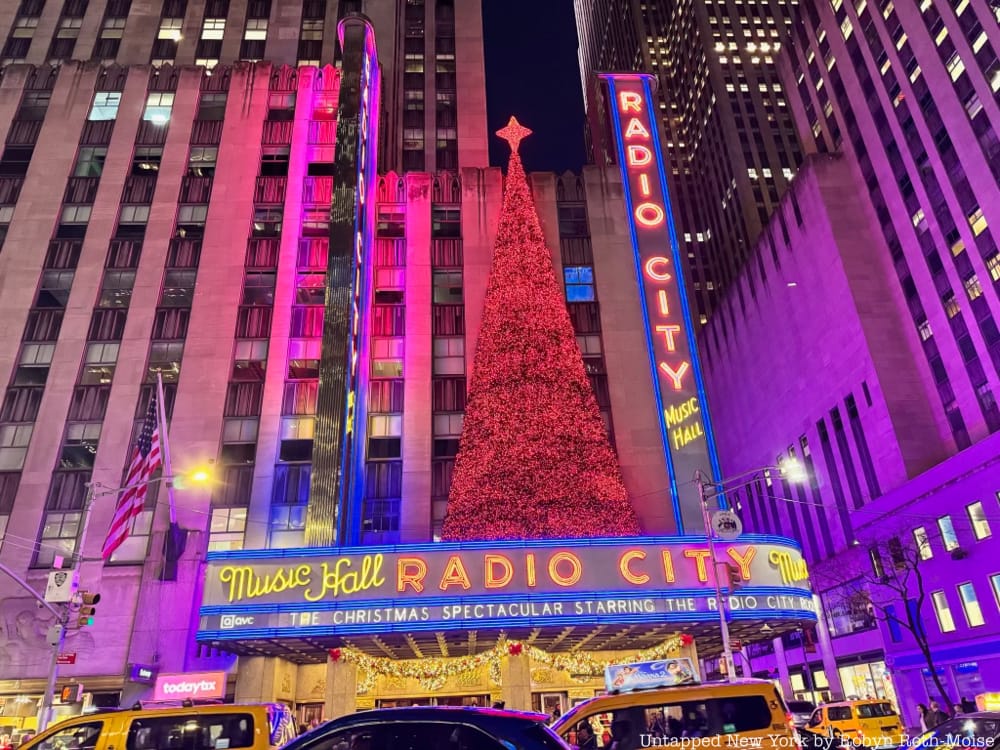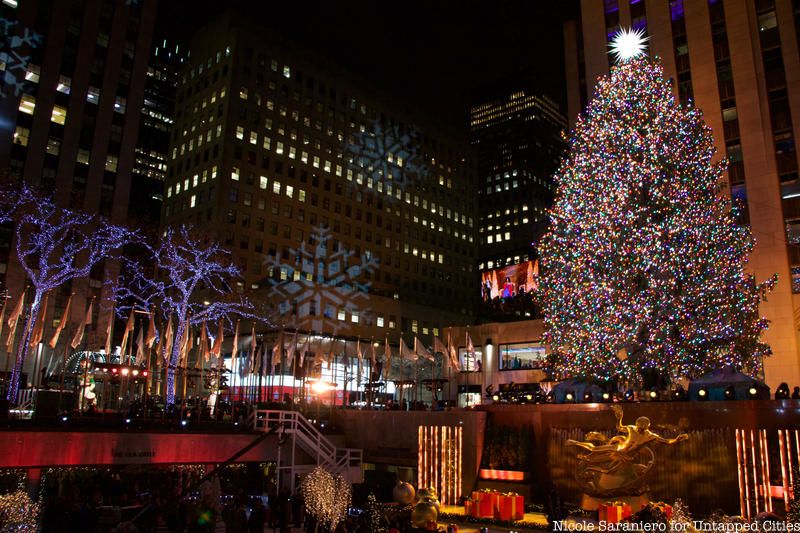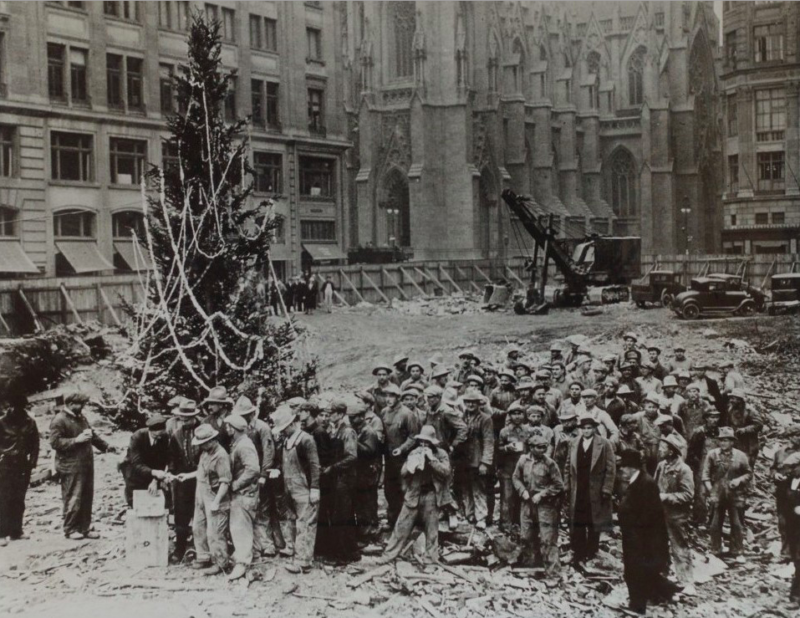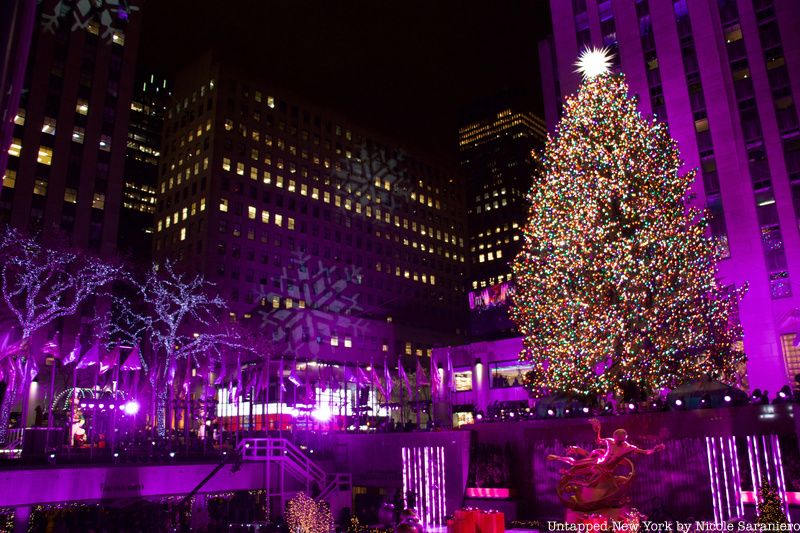How to Make a Subway Map with John Tauranac
Hear from an author and map designer who has been creating maps of the NYC subway, officially and unofficially, for over forty years!

Did you know the tree once came from Canada? Or that it's strung with miles of lights?!

Each year, the arrival and lighting of the Rockefeller Center Christmas Tree are awaited with bated breath. The anticipation is full of holiday spirit, as the city is basking in the arrival of the holiday department store windows and other festive cheer. We had the great fortune of going behind the scenes into the lighting ceremony of the Rockefeller Center tree and are sharing with you the top 10 secrets we learned about this tradition that dates back to 1931.

2018 marked the first new star on the Rockefeller Christmas tree since 2004 and the first redesign of the star since the inaugural Swarovski star. Architect Daniel Libeskind, who did the master plan for the rebuilding of the World Trade Center following the 9/11 attacks, created the new star. Libeskind’s star has three million Swarovski double-cone crystals and weighs 900 pounds. The retired star weighed 550 pounds and had one million crystals. The diameter of the new star is roughly the same as the older one: 9 feet 4 inches. The new star has 70 spikes and emits 106,400 lumens of light.

Admire the holiday decor along Fifth Ave on an expert-led tour who will share the history of NYC's annual traditions!
For the nerds in us, the core of the star is made of custom-machined aluminum and 140 LED lighting spots. The star is illuminated with Swarovski’s own “Active Panel” technology, a proprietary backlighting method that uses heat to affix the crystals to glass for full sparkle capacity. It was made both in Rhode Island and in Austria.

This year, the Rockefeller Center Christmas Tree is 74 feet tall and 43 feet in diameter, weighing about 11 tons. The largest tree to grace the plaza came in 1999. That record-setting came tree from Killingworth, Connecticut, and was 100 feet tall.
Head gardener at Rockefeller Center Erik Pauze scouts out potential trees every year and has been doing so for the past three decades. Pauze told The Center Magazine that the process for picking the tree is “somewhat different every year. Typically, the timeline is that all year, almost every day, I’m thinking about this year’s Tree, next year’s Tree, and maybe the Tree after that.” Pauze is constantly on the lookout for “a nice full tree. Something that’s going to look great in front of 30 Rockefeller Plaza.”

Just to put the size of the Rockefeller Center Christmas Tree into perspective, it takes more than 50,000 lights to fully decorate it. The wire that the lights are strung on, plugged in end to end, would stretch five miles, about the distance from 110th Street to 14th Street along Broadway, or from 30 Rock to Battery Park. As another point of reference: the perimeter of Central Park is 6 miles. The lights that make the tree sparkle are multi-colored LEDs.
Once the tree is lit, it usually stays that way until January. During World War II, however, the tree went unlit. Simple and patriotic red, white, and blue globes along with painted wooden stars adorned the tree. The tree was dark from 1942 until the end of the war due to blackout regulations.

It’s always sad to see the Rockefeller Center Christmas Tree taken down, but its purpose goes beyond the holidays. The tree was first recycled in 1971, providing roughly 30 bags of mulch that was spread across nature trails around the city. Over the years, it has also provided resources for several projects: in 2005, for example, Habitat for Humanity used the wood to make door frames for houses for the needy, and two years later, the tree was used to build houses in New Orleans for those affected by Hurricane Katrina.
This year’s tree will also be donated (as it has been for over fifteen consecutive years) to Habitat for Humanity. First, the wood needs to be milled and treated, before it is made into lumber for home building. The tree itself also inspired the book, The Carpenter’s Gift, written by David Rubel and illustrated by Jim LaMarche in collaboration with Habitat for Humanity. Fittingly so, about 15% of the 2012 tree was used to make the paper needed for the book’s production. One year, the largest portion of the trunk was donated to the U.S. Olympic Equestrian Team headquarters in New Jersey, where it was used as an obstacle jump for training horses. In some years, a table was made for the tree donors.

Imagine if there was not just one tree at Rockefeller Center, but many? That has happened before. In 1936, three years after the first tree lighting ceremony, there were two trees about 70 feet tall. It was also the first year the Rockefeller Center Outdoor Ice Skating Pond was open and a skating pageant took place. Then, in 1942, there were three trees placed to support the troops in World War II. One was decorated in red, one in white, and one in blue.

Erik Pauze, the Head Gardener at Rockefeller Center, is in charge of scouting potential trees by visiting locations (ranging from nurseries to backyards) throughout the Tri-State area and beyond. David Murbach, the former Manager of the Gardens Division of Rockefeller Center, served in this role previously for 26 years before his death in 2009. But the tree can also be nominated by individuals – you can actually submit a tree for consideration through the Rockefeller Center website. In fact, that’s how the 2015 tree was discovered. (It was submitted by a family from Gardiner, New York, who feared that their oversized tree would fall over onto the house).
What factors are considered when selecting the perfect tree? According to Pauzé and his team, the winner is chosen based on its heartiness and overall “Christmas tree shape,” as well as its ability to carry heavy ornaments. As a thank you, families who donate their trees are also given VIP access to the lighting ceremony.

Over the years, a variety of transportation methods have been used to bring the chosen Christmas tree to its usual outpost at Rockefeller Center. The tree itself is typically decorated with giant bows and a banner as it makes its pilgrimage — usually via truck or a barge. When it goes by truck, as it did this year, the team has to make sure the tree can clear the 14-foot bridge clearings. In 1998, however, a 73-foot-tall tree was actually flown in from Richfield, Ohio on the Anatov 124, the world’s largest transport plane.

In December 1931 most New Yorkers were suffering from the economic devastation caused by the Great Depression. On December 24 the New York Times reported a surplus of unsold Christmas trees since people weren’t able to afford them: “Christmas trees were a glut on the market yesterday…. More than 120 carloads of trees remain unsold.” In contrast, the Rockefeller Center project employed close to 40,000 people desperate for work. So that Christmas Eve, the construction workers, grateful to have jobs, decided to pool their money and purchase one of those surplus trees.
They took a twenty-foot balsam fir and put it up in the center of the newly cleared work site. The men decorated the tree with various items including tin cans, cranberries, and paper garlands made by some of their families. The tree was not lit, but the foreman placed a small table under it where he handed out the worker’s paychecks before they went home to their families for the holiday.

In 1949, the Rockefeller Center Tree was painted in silver to look like it was under the snow, in addition to 7,500 lights. Although that’s far fewer than it is now, the lights were in a variety of hues including pink, yellow, and orange, and there were 576 whirling snowflakes on the walkway leading up to the plaza. The New York Times reported that when the tree lights were turned on, the skaters were “so stunned by the sudden magnificence of the silver tree shining above them that many of them fell down or bumped into each other while gazing at it.
It was such a spectacle that the tree caused one of the biggest traffic jams along Fifth Avenue “in recent years”, according to The Times, causing policemen to become “distraught.” The police department estimated that “hundreds were forced to return to Connecticut, Westchester, and Long Island without seeing the tree.”

Since the establishment of the Rockefeller Center Christmas Tree tradition, there has only been one non-U.S. tree. Most come from New England or within the tri-state area, but in 1966, Canada donated a 64-foot-tall white spruce from Petawawa Forest, which is located roughly 120 miles north of Ottawa, Ontario. The tree, donated in honor of the Centennial of Canada’s Confederation (1967), had to travel 550 miles to reach Rockefeller Center.

Admire the holiday decor along Fifth Ave on an expert-led tour who will share the history of NYC's annual traditions!
Next, check out The Top 10 Secrets of Rockefeller Center.
Subscribe to our newsletter